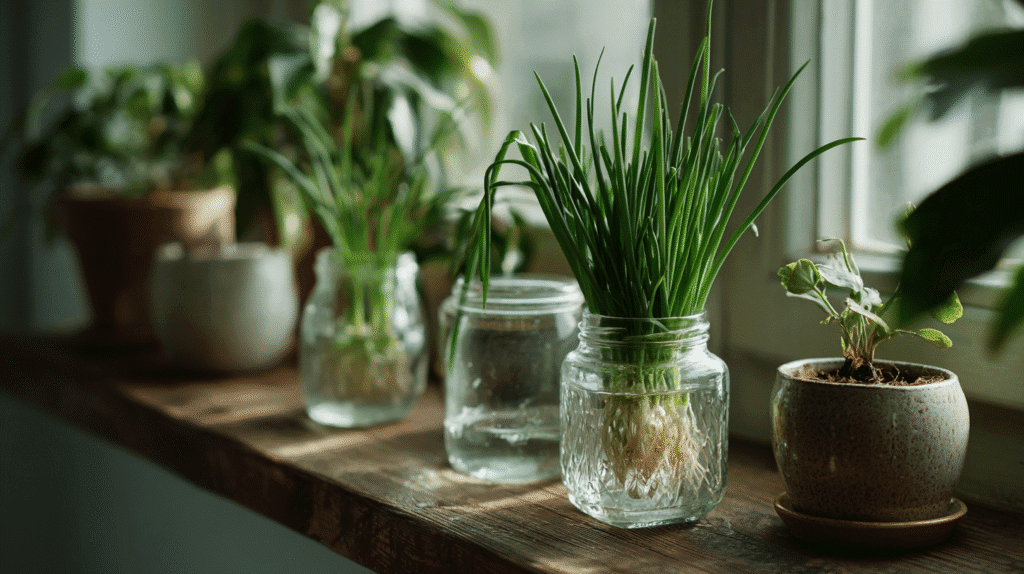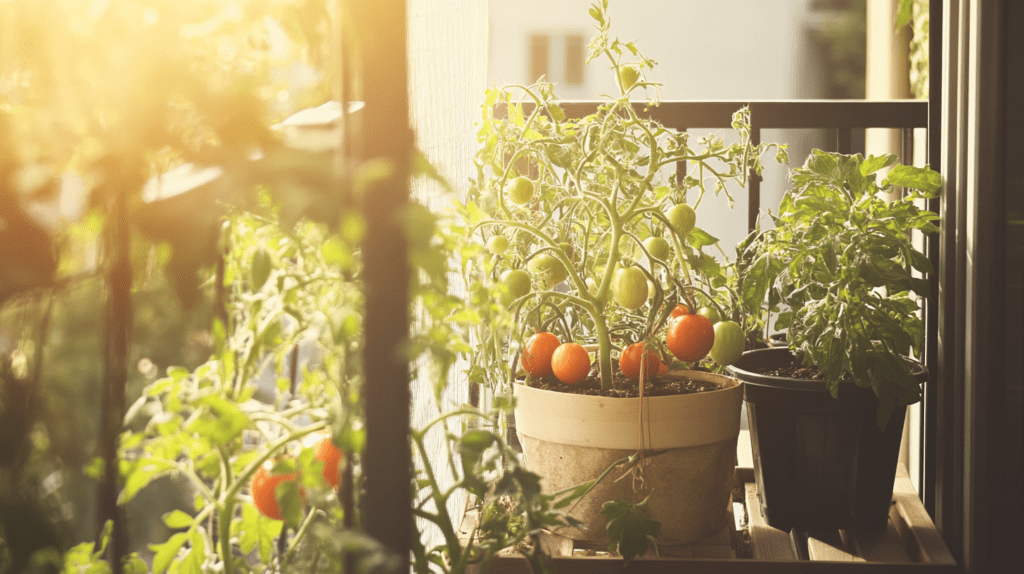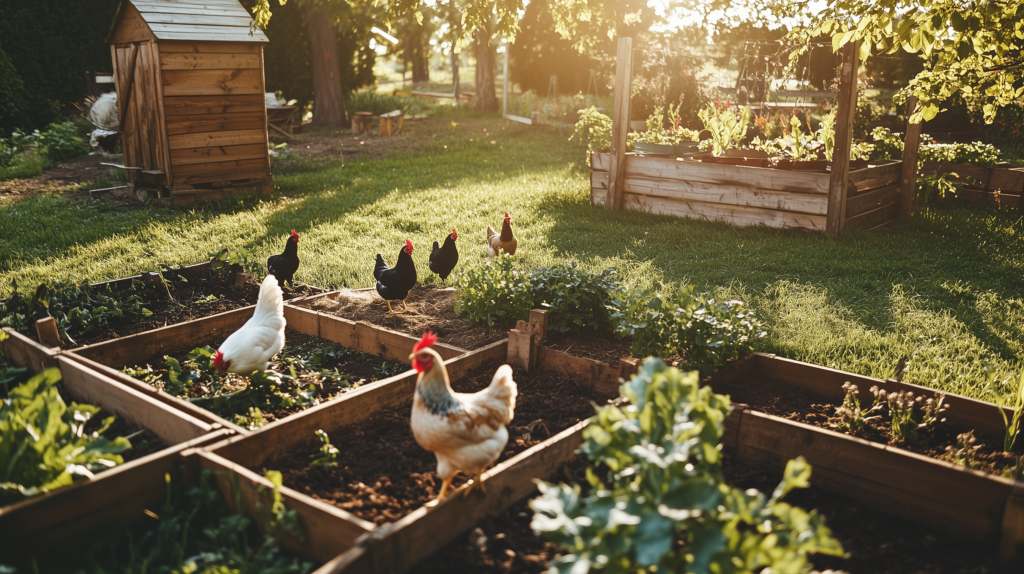This post may contain affiliate links, including those from Amazon Associates. If you make a purchase through these links, I may earn a commission at no additional cost to you. Learn more about our affiliate policy.
Somewhere between rinsing out a yogurt tub to reuse as a planter and simmering broth from veggie scraps, I realized I didn’t need land or money to start living more self-sufficiently.
If you’re dreaming of a more sovereign life but feel limited by space, time, or budget, this is your reminder: you can start with what you have, right where you are.
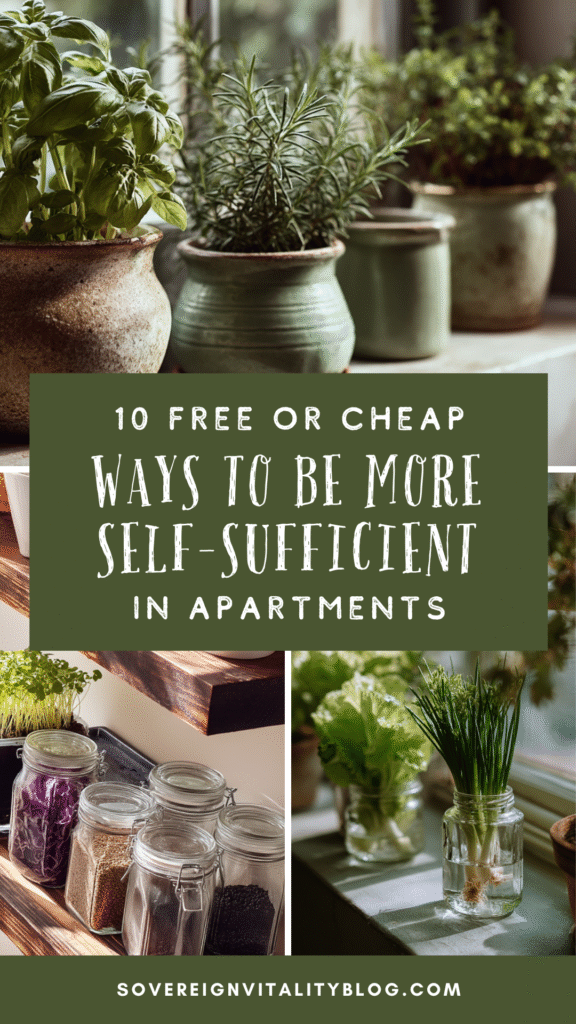
These 10 ideas are completely free or incredibly low-cost, and each one builds real skills, resilience, and confidence right from your apartment.
I’ve come to learn that true self-sufficient living in a city isn’t about dramatic gestures or having acres of land. Instead, it’s quietly cultivated, one intentional choice at a time. No matter your situation, your tiny apartment holds more potential for self-sufficiency than you might think.
1. Regrow Kitchen Scraps
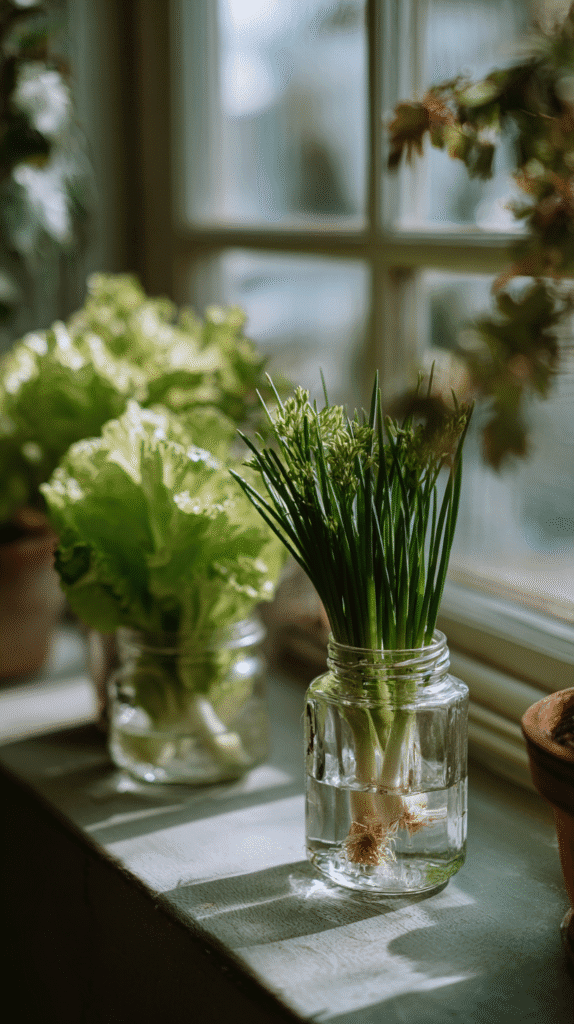
One of the simplest acts of self-sufficiency begins right in your kitchen.
Instead of discarding the ends of green onions, lettuce heads, or basil stems, save them. Place these scraps in small jars of water on a sunny windowsill, and watch as they slowly sprout and grow again.
This practice is beautifully uncomplicated yet deeply rewarding.
Watching new life emerge from something most people discard reconnects you to the abundance already present in your home.
Green onions and lettuce grow quickly, offering tangible rewards within just days, while basil and other herbs bring a gentle fragrance to your kitchen space.
2. Use Upcycled Containers to Start a Garden
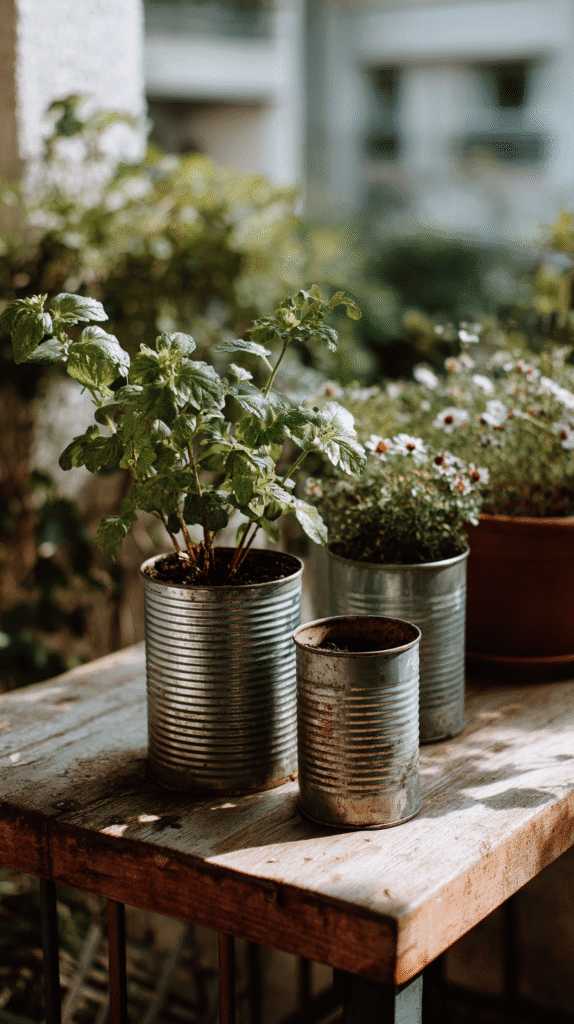
If you’re eager to expand beyond scraps and herbs, look around your apartment. Yogurt tubs, food containers, tin cans, all these everyday objects can easily become planters.
Just use a screwdriver or nail to poke drainage holes in the bottom, fill with potting soil, and plant seeds or seedlings.
Creating a recycled garden isn’t just budget-friendly, it’s also a creative and fun way to reduce waste.
My first apartment balcony garden was entirely built from upcycled materials, and every tomato, pepper, or sprig of thyme that emerged felt especially meaningful.
If you’re looking for more creative container ideas, visit my guide: 10 Simple DIY Container Ideas for Apartment Gardening on a Budget.
3. Learn a Food Preservation Method With What You Have
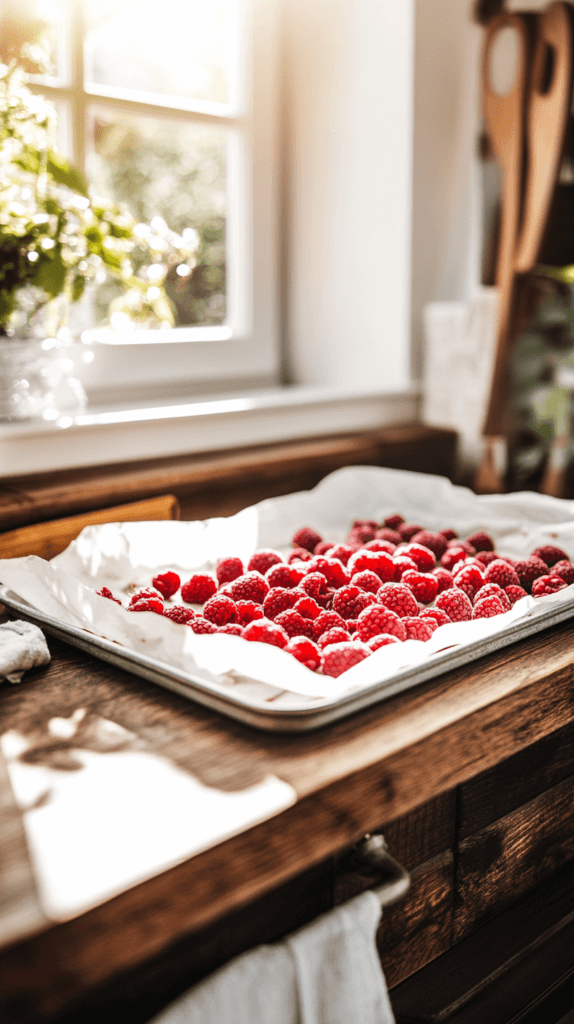
Preserving food can feel daunting at first, but you don’t need special equipment or training to get started.
Begin simply with what you have: freeze leftover berries on a baking tray, dry bundles of herbs on a kitchen string, or save vegetable scraps in a freezer bag to make broth.
If you’re feeling adventurous, try quick pickling vegetables. All you need is salt, apple-cider vinegar and vegetables (like carrots, cabbage, or cucumbers), and a clean jar.
The process is intuitive and deeply satisfying, resulting in delicious, gut-friendly foods that bolster your sense of food sovereignty.
For more gentle entry points into preserving food, explore my post: 6 Easy Ways to Preserve Food Without Canning.
4. Make One Cleaning Product From Scratch
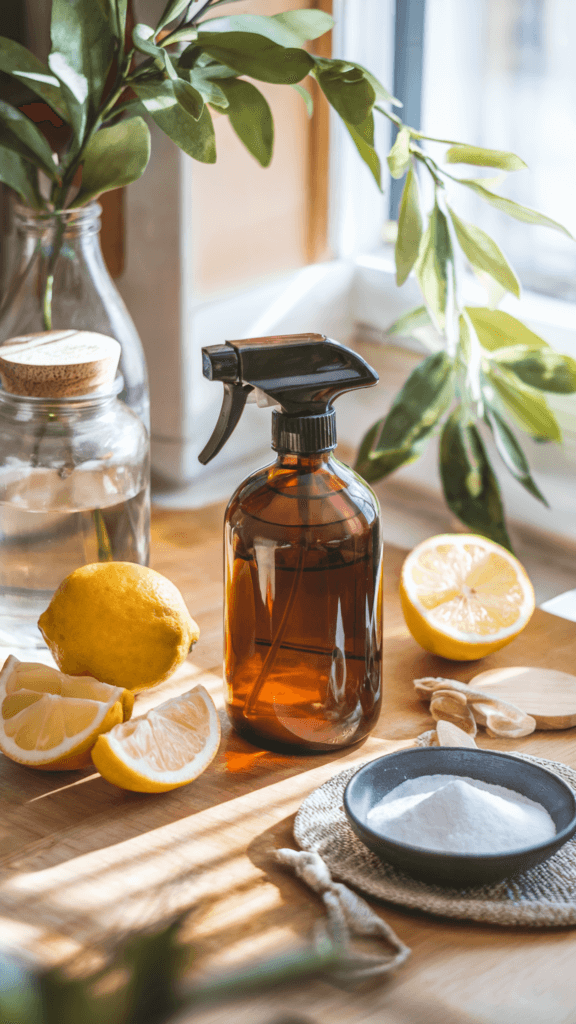
The shift toward self-sufficiency also includes what you bring into your home.
Making your own cleaning products from scratch is not only empowering, it’s healthier and more affordable, too.
A simple favorite is an all-purpose cleaning spray: fill a jar with citrus peels, cover with white vinegar, and let it steep for two weeks.
Strain into a spray bottle and add lavender or rosemary essential oil if you have it.
This homemade cleaner rivals any store-bought option, fills your home with lovely scents, and gently nurtures a non-toxic living environment.
Ready to explore more? See my guide: 7 Easy DIY Non Toxic Cleaners That Outperform Chemical Brands.
5. Barter or Skill-Share With Neighbors
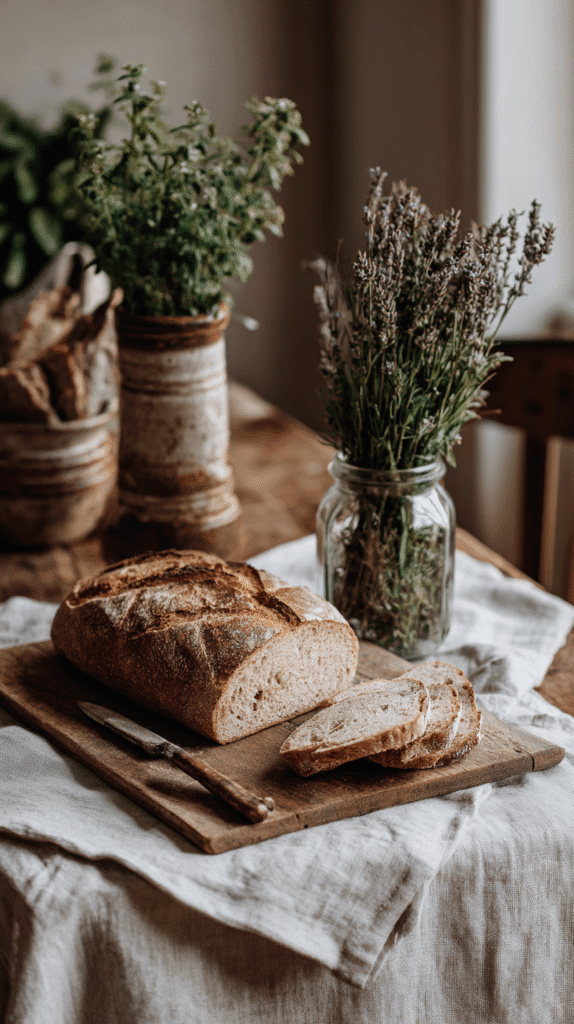
Self-sufficiency isn’t isolation, it’s deeply community-rooted.
One of the richest ways to feel more independent is paradoxically through collaboration.
Consider bartering skills or items with your neighbors: trade homemade sourdough bread for seeds, swap herbs for clothing repairs, or offer preserves for garden-fresh vegetables.
You can connect through local buy-nothing groups, Facebook barter pages, or neighborhood apps like NextDoor.
These exchanges build not only resilience and practical homesteading skills, but also create bonds of trust and mutual support right where you live.
6. Check Free Local Resources (And Leave No Shame)
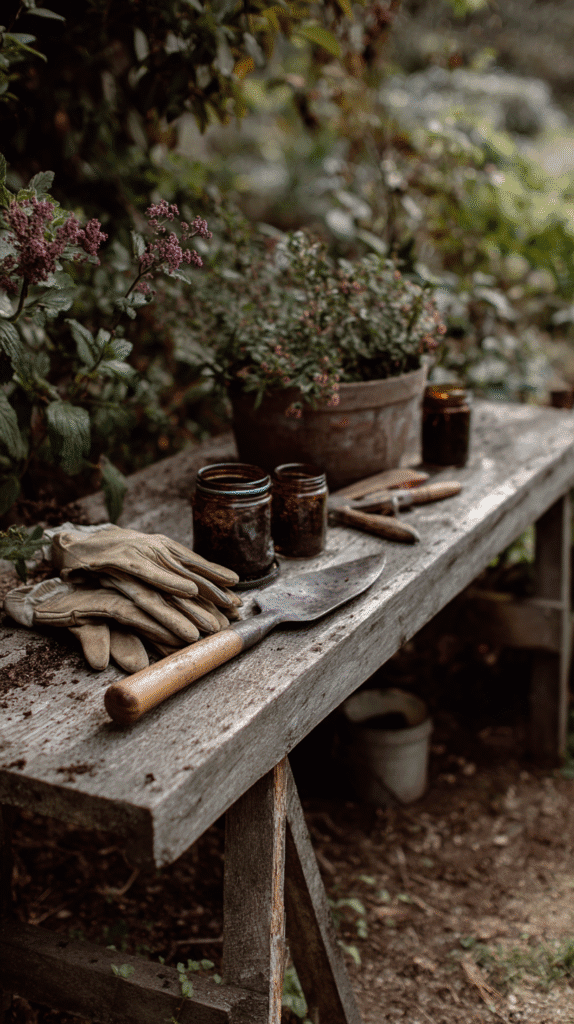
There’s tremendous abundance hiding in plain sight. Regularly check local resources like Craigslist’s Free section, Facebook Marketplace, or neighborhood apps for pallets, compost bins, gardening tools, mason jars, or seeds.
Many cities offer free compost pickup, seed swap events, or community workshops on urban homesteading topics.
Take advantage of these resources without hesitation, true self-sufficient living thrives in resourcefulness and open-mindedness.
Each free or recycled find becomes part of your thoughtful, intentional self sufficient living plan.
7. Cook One Meal Completely From Scratch
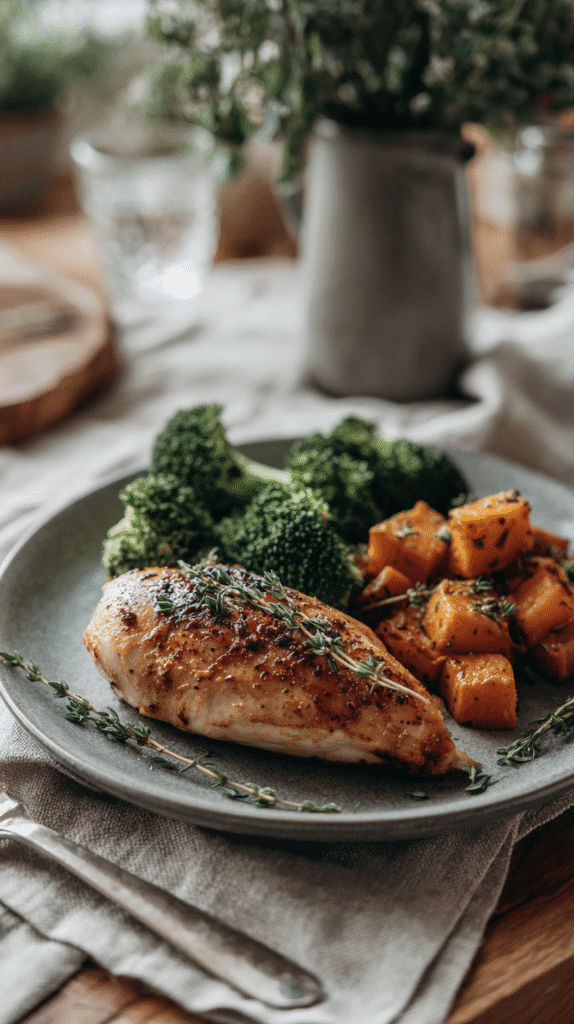
Even if scratch cooking feels intimidating, I encourage you to choose one simple meal you really love and start there.
Perhaps it’s a nourishing vegetable soup, baked salmon, or a batch of beans and rice. Use ingredients already in your pantry or affordable seasonal produce.
Learning to cook from scratch is at the heart of urban homesteading, helping you stop relying so much on the grocery store.
Each meal you create strengthens your cooking confidence and deepens your commitment to a more self-sufficient kitchen.
Gradually, you’ll rely less on packaged goods and more on your own skills and resources.
Go slow, follow online tutorials, blogs, or cookbooks, and give yourself permission to learn at your own pace.
8. Learn One Repair or DIY Skill With Found Tools

Self-sufficient living extends beyond food into caring for your home. Start with one simple repair or DIY skill: unclogging a sink, patching a hole in the wall or mending a torn piece of clothing.
With guidance from library books or YouTube tutorials, you’ll quickly develop practical homesteading skills.
Gather your own basic toolkit by checking second-hand stores, estate sales, or borrowing from friends.
Each repair builds your confidence, showing you how capable you truly are. There’s genuine empowerment in fixing something yourself.
9. Start a Compost or Stock System

Composting reduces waste and creates nutrient-rich soil, even in an apartment. Consider vermicomposting (worm bins), Bokashi composting (an odor-free method), or dropping off scraps at a local community composting facility.
If composting isn’t feasible, turn your food scraps into broth.
Store onion skins, carrot ends, and bones in freezer bags, then simmer into nourishing stock when full.
This practice reduces waste, saves money, and adds depth to your cooking, further supporting your sustainable kitchen journey.
10. Practice Resource Conservation as a Daily Ritual
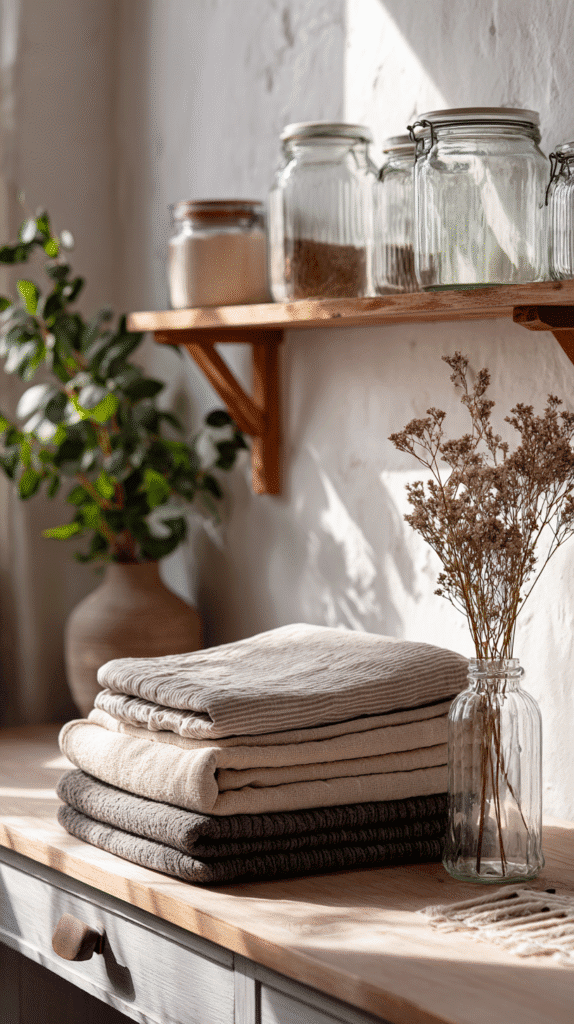
Finally, incorporate small, everyday habits of resource conservation. These actions may feel tiny individually, but collectively, they build a life deeply aligned with self-sufficient living principles.
Switch to LED bulbs, air-dry your clothes, and use less water.
Choose reusable cloths instead of paper towels and opt for durable, quality items over disposable products.
Each mindful choice creates a rhythm of low-waste living, quietly fostering a self-sufficient homestead right in your apartment. For more easy swaps, explore my post: 14 Easy Eco-Friendly Swaps for a Sustainable Urban Homestead.
Closing Reflection
Self-sufficiency isn’t about arriving at perfection. It’s about reclaiming agency in small, soulful ways with what you have on hand.
With every jar you fill, item you mend, or seed you plant you’re building a life rooted in resourcefulness and care.
Your apartment might not resemble a traditional homestead, but sovereignty isn’t defined by acreage or equipment. Instead, it’s cultivated through thoughtful intention and everyday practices.
Begin where you are. Start with one thing like a single herb plant, a homemade cleaner, a freezer bag of scraps saved for broth.
In a busy, complex world, these little practices offer grounding and clarity, gently guiding you toward deeper alignment with your values.

